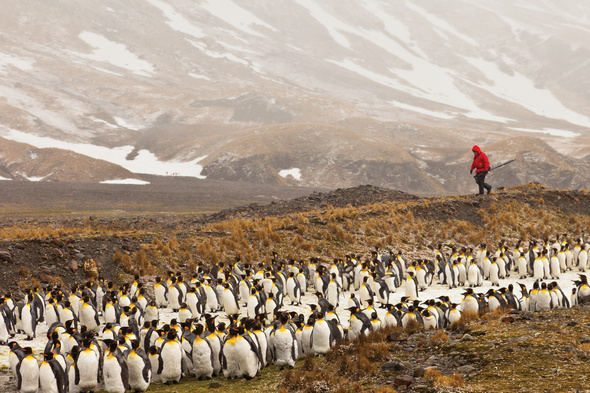Amongst your fellow guests you'll probably find experienced photographers equipped with professional quality cameras, equipment that takes a significant amount of knowledge and practice to master. But what about us keen amateurs who also want to come home with some great pictures?
Luckily the technology contained within our smartphones has come on leaps and bounds in recent years, and your phone camera has the advantage of being both incredibly easy to use and something you're already familiar with. Unlocking your phone's potential is an easy way to improve your pictures, so we've put together ten tips to get the most out of the technology you're already carrying around in your pocket...
1. Keep the horizon straight
There aren't many things more annoying than a wonky horizon, and it's especially important when take a picture at sea. Luckily it's a really easy fix, with just a few seconds spent adjusting your phone's camera settings.
Based on an iPhone, go to Settlings then Camera and just tap on the Grid toggle to make sure it's active. Gridlines will now overlay the photo when you're taking it, making it easy to align your shot.
Don't panic if, despite the gridlines, it's still not quite right; the joy of today's smartphones is photos are so easy to edit. Again, based on an iPhone, open the picture in the Photos app, click Edit, then use the rotate option to tweak the angle until its just right.

2. Remember the rule of thirds
Now you have your gridlines you can improve the composition of your landscape photographs by remembering the rule of thirds, placing the most important features along these gridlines and at the intersections.

3. Don't be afraid of negative space
An image which is largely empty is a great way of making sure that the elements you have captured really stand out. They also make great shots to share on social media as the image has more impact when viewed on smaller screens.

4. Capture wildlife with burst mode
Capturing a fleeting glimpse of a whale breaking the surface of the water is made easier by using the burst mode available on most smartphones. By pressing and holding the button you use to take the picture (or, on an iPhone 11 or 12, pressing and sliding to the left for portrait, up for landscape) you'll take a series of continuous pictures until you lift your finger.

5. Get the right exposure
Getting the right level of exposure can be difficult, especially when you want a great shot of yourself or a travelling companion in front of a magnificent backdrop. Ideally the sun should be behind the camera, lighting the form in the foreground as well as the landscape behind.
For those moments when you're struggling to get the right balance to your pictures you can adjust the exposure by tapping on an area of brightness or darkness before you take the picture which, on an iPhone, prompts a yellow box with a sun symbol to appear. Simply slide the sun up or down to increase or decrease the exposure.

6. Switch on the High Dynamic Range (HDR)
Depending on your phone model this might be labelled as HDR or Smart HDR, but either way it's best to set this function on. Based on an iPhone, go to Settings, then Camera and just tap on the HDR toggle to make sure it's active.
Put simply, this is a piece of software that, when an image has high levels of contrast - e.g. a bright sunset against a darkening mountain - will take multiple images at different exposures and merge them into a single, better photograph.

7. Shoot during the 'golden hour'
You can also take advantage of the 'golden hour', which is just after sunrise and sunset (and lasts longer in the polar regions), when the light is soft and golden, giving a fantastic warmth to your pictures.

8. Use depth to add interest to your landscape pictures
Creating depth in an image helps lead the viewer's eye from the foreground to the background, making a more interesting image which can also make the landscape feel more spacious. Rivers, cliff edges, paths, fences and roads are great for this. Another method is to use an object in the foreground to add depth, which can be a particularly striking way of combining landscape and wildlife photography, with results best achieved if you shoot close to the ground.
You can also use objects in the foreground to frame your scene. Portholes, windows, doorways, arches and even overhanging trees can all be used to create a frame for the scene you want to highlight.

9. Choose a focal point
With the huge landscapes you'll encounter on an expedition cruise, it can be tempting to try to capture everything in one shot, but choosing a particular point of interest will prevent your photo from looking empty, and is another way of drawing the viewer's attention. Luckily, people make great focal points!

10. Have fun
With no film to worry about, you can take as many pictures as you like, and simply delete the ones that haven't worked - how else are you going to while away the hours of your journey home! So have fun with the pictures you take and don't worry if some shots haven't worked. Have fun and be creative by trying new things; it might just help you capture that perfect picture.



